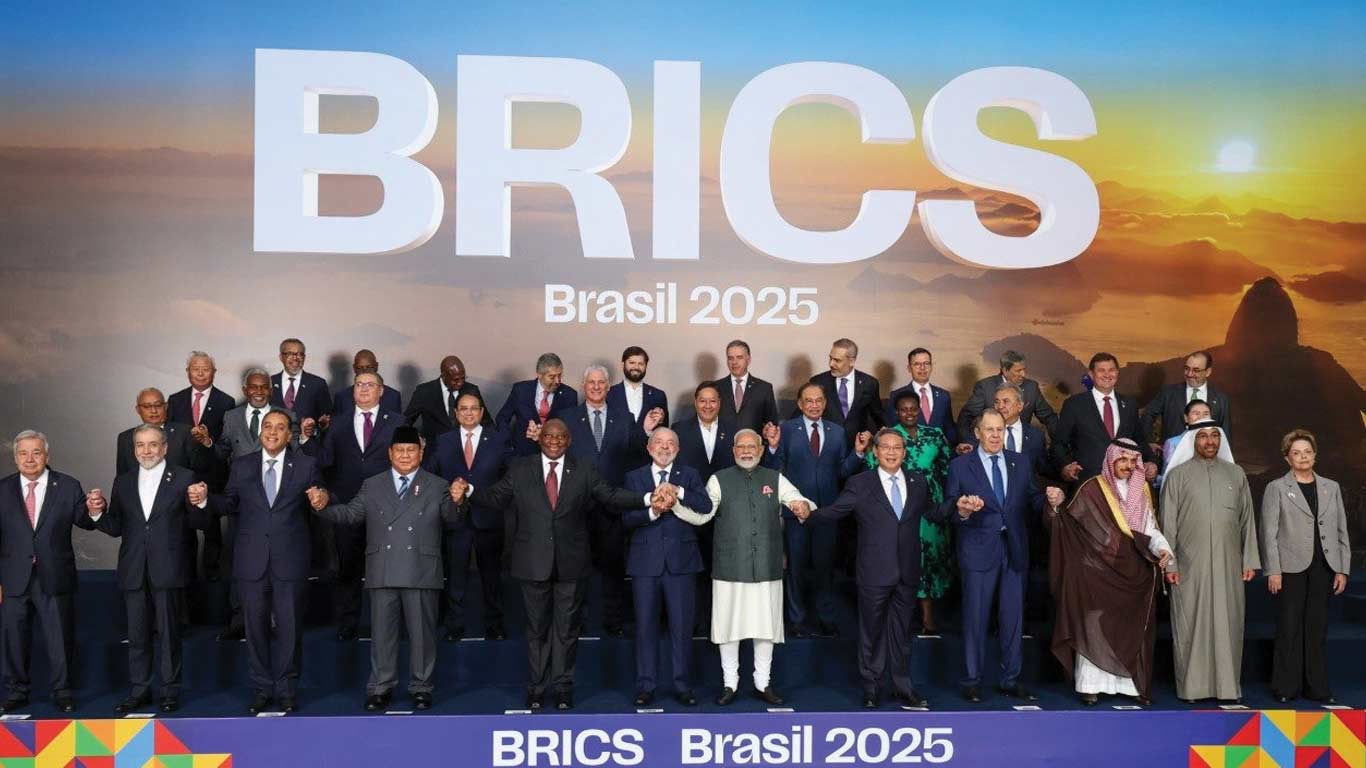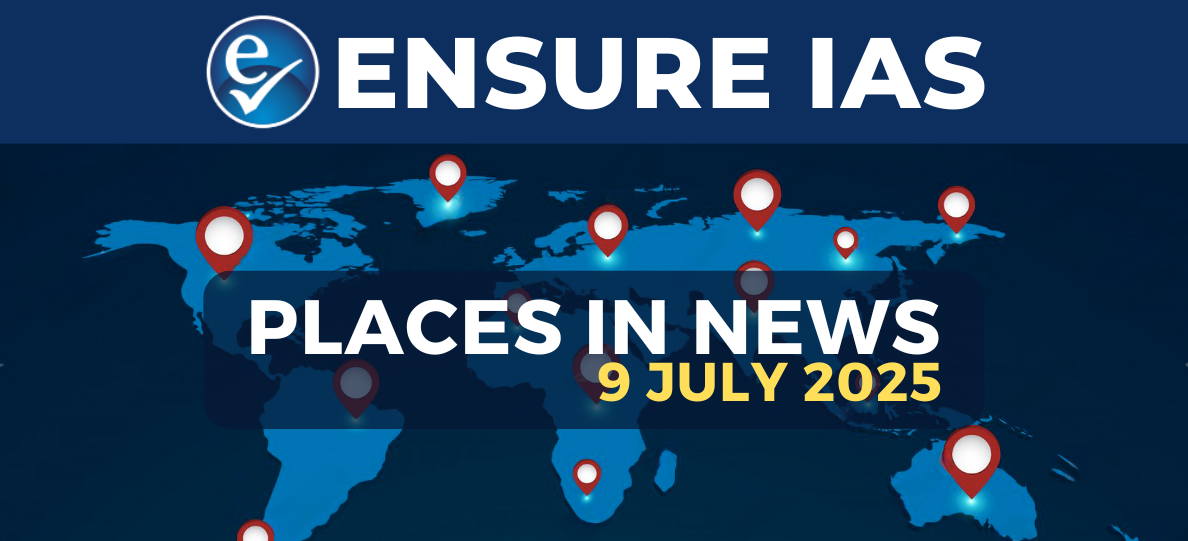- Courses
- GS Full Course 1 Year
- GS Full Course 2 Year
- GS Full Course 3 Year
- GS Full Course Till Selection
- Answer Alpha: Mains 2025 Mentorship
- MEP (Mains Enrichment Programme) Data, Facts
- Essay Target – 150+ Marks
- Online Program
- GS Recorded Course
- Polity
- Geography
- Economy
- Ancient, Medieval and Art & Culture AMAC
- Modern India, Post Independence & World History
- Environment
- Governance
- Science & Technology
- International Relations and Internal Security
- Disaster Management
- Ethics
- NCERT Current Affairs
- Indian Society and Social Issue
- NCERT- Science and Technology
- NCERT - Geography
- NCERT - Ancient History
- NCERT- World History
- NCERT Modern History
- NCERT Medieval History
- CSAT
- 5 LAYERED ARJUNA Mentorship
- Public Administration Optional
- ABOUT US
- OUR TOPPERS
- TEST SERIES
- FREE STUDY MATERIAL
- VIDEOS
- CONTACT US
BRICS vs Europe’s CBAM: Climate and Trade Tensions
BRICS vs Europe’s CBAM: Climate and Trade Tensions

Why in the News?
- BRICS nations have strongly condemned Europe’s Carbon Border Adjustment Mechanism (CBAM), calling it discriminatory and protectionist.
- The group urged developed countries to urgently increase their financial contribution to climate adaptation, at least doubling the 2019 levels by 2025.
- The BRICS summit in Brazil included, for the first time, a separate declaration focused on climate finance.
- The group also stressed the need to uphold international law and trade principles under the UNFCCC (United Nations Framework Convention on Climate Change) framework.
Key Highlights
- What is CBAM?
- CBAM is an import duty imposed by the European Union on goods with a higher carbon footprint than EU norms.
- It is designed to prevent ‘carbon leakage’:
- Carbon leakage means companies move their factories to countries where climate rules are not strict.
- This helps them avoid spending money on reducing pollution.
- CBAM tries to stop this by making such imports more expensive.
- It affects carbon-intensive products like steel, cement, aluminum, etc.
- Developing countries argue it reduces competitiveness of their exports to Europe.
- BRICS Opposition to CBAM
- BRICS condemned CBAM as a “unilateral, punitive, and discriminatory” measure taken under the pretext of climate action.
- They argued it violates principles of equity and international law.
- Such policies are said to distort global trade and supply chains.
- They pose obstacles to clean energy transitions in developing countries.
- Violation of UNFCCC Principles
- BRICS cited Article 3(5) of the UNFCCC, which states that climate measures must not become a form of unjustified trade restriction.
- The declaration said CBAMs and restrictions on forest goods trade violate UNFCCC provisions and other climate agreements.
- BRICS demanded full implementation of UNFCCC provisions, particularly those that ensure trade fairness.
- Impact on Developing Countries
- CBAMs and similar policies risk diverting away critical resources needed for clean energy transitions.
- BRICS argued that such trade measures hurt their ability to invest in infrastructure and sustainable growth.
- Economic sanctions and restrictions can weaken developing countries’ capacity to tackle climate change.
- Demands on Climate Finance
- BRICS emphasized the urgent need to increase climate finance from developed to developing countries.
- Developed countries must at least double the 2019 levels of adaptation finance by 2025.
- Adaptation finance must be concessional (low-interest loans or grants), predictable, and accessible to local communities.
- The group emphasized that finance must not worsen the debt burden of poorer countries.
About UNFCCC
|
Implications for India
- Trade and Economic Impact
- CBAM could reduce the global competitiveness of Indian exports, especially in steel, cement, and aluminum sectors.
- Indian manufacturers may have to adopt costly cleaner technologies to remain viable in European markets.
- Export diversification and trade negotiations must now include climate compliance strategies.
- Diplomatic Leverage
- India’s stand at global climate and trade forums will gain strength with BRICS backing.
- BRICS solidarity can help build a larger developing-country coalition to resist unilateral trade measures.
- Strengthening South-South cooperation becomes more important.
- Financial Needs for Transition
- India needs massive investments in clean energy and climate adaptation infrastructure.
- Global financial commitments are crucial to bridge India’s energy transition funding gap.
- Public finance and grants must be prioritized over loans to avoid debt stress.
- Climate Justice and Equity
- India has contributed far less to historical emissions but faces high vulnerability.
- Equitable climate financing and technology transfer are essential to ensure just transitions.
- Adaptation must receive equal emphasis as mitigation.
- Policy Integration and Preparedness
- Climate policy must incorporate trade dimensions, such as carbon standards and border taxes.
- India should enhance its domestic carbon accounting and certification mechanisms.
- Alignment of environmental regulation with international practices is needed.
Challenges and Way Forward
|
Challenges |
Way Forward |
|
CBAM reduces India’s trade competitiveness |
Upgrade manufacturing to greener processes; secure climate finance |
|
Limited access to adaptation finance |
Advocate for increased concessional finance at global platforms |
|
Unfair global trade policies |
Strengthen Global South alliances; use WTO forums strategically |
|
Technology and infrastructure gaps |
Promote R&D and invest in resilient infrastructure |
|
Risk of increased debt burden |
Focus on grants, not just loans; improve access to climate funds |
Conclusion
The BRICS statement marks a united front by major developing economies against unilateral climate-linked trade barriers like CBAM. It highlights the need for equitable, rules-based climate action and fair access to climate finance. For India, this moment calls for recalibrating trade, climate, and diplomatic strategies to defend development space while transitioning sustainably.
|
Ensure IAS Mains Question Q. Discuss the concerns raised by BRICS nations against the European Union’s Carbon Border Adjustment Mechanism (CBAM). How should India balance climate commitments with the need to protect its economic and trade interests? (250 words) |
|
Ensure IAS Prelims Question Q. With reference to the Carbon Border Adjustment Mechanism (CBAM), consider the following statements:
Which of the statements given above are correct?
Answer: a. 2 and 3 only Explanation: Statement 1 is incorrect: CBAM is not a mechanism introduced by the UNFCCC. It is a policy tool proposed and implemented by the European Union (EU) as part of its climate strategy to reduce carbon emissions globally. Statement 2 is correct: CBAM imposes a carbon price (effectively a tax or levy) on imports into the EU based on their embedded carbon emissions, aligning them with the EU's internal carbon pricing (under EU Emissions Trading System). Statement 3 is correct: The main objective of CBAM is to prevent carbon leakage, i.e., the shifting of carbon-intensive industries from countries with strict climate rules to those with weaker regulations, thereby undermining global climate goals. Statement 4 is incorrect: CBAM currently applies to carbon-intensive industrial products like steel, cement, aluminum, electricity, fertilizers, and hydrogen, not to food and forest-based products. |



